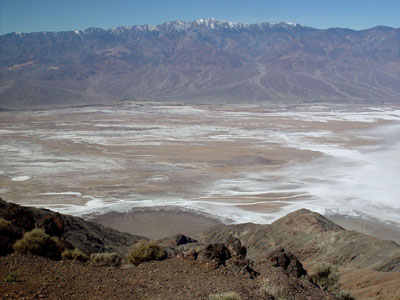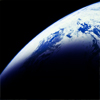| Geology
| |
 |
| |
Looking down on Death Valley from Dante's View.
Telescope Peak on the skyline rises to an elevation of 11,049 feet.
Photo: Nick Christie-Blick |
| |
|
Our faculty and staff engage in research projects that include the processes of continental deformation, fault growth, normal faulting, sedimentary layering patterns, Neoproterozoic Earth history, and orbital forcing of the Earth's climate and its geological consequences. Current research centers on linkages between glaciation and the evolution of the oceans, atmosphere and life. An interdisciplinary research approach includes aspects of structural geology, seismology, volcanology, paleomagnetism, Quaternary stratigraphy, isotope geochronology and numerical modeling, as well as active field work.
In general our research takes on an eclectic approach to science, trying to integrate a range of techniques from a number of different fields to solve fundamental problems in structure and tectonics. The faculty has developed strong collaborations with Columbia University geophysicists, tectonophysicists, isotope geochemists, climatologists and American Museum of Natural History paleontologists. Opportunities are available for Columbia students to learn about and to undertake projects and excursions that are organized reguarly for both undergraduate and graduate students.
|




